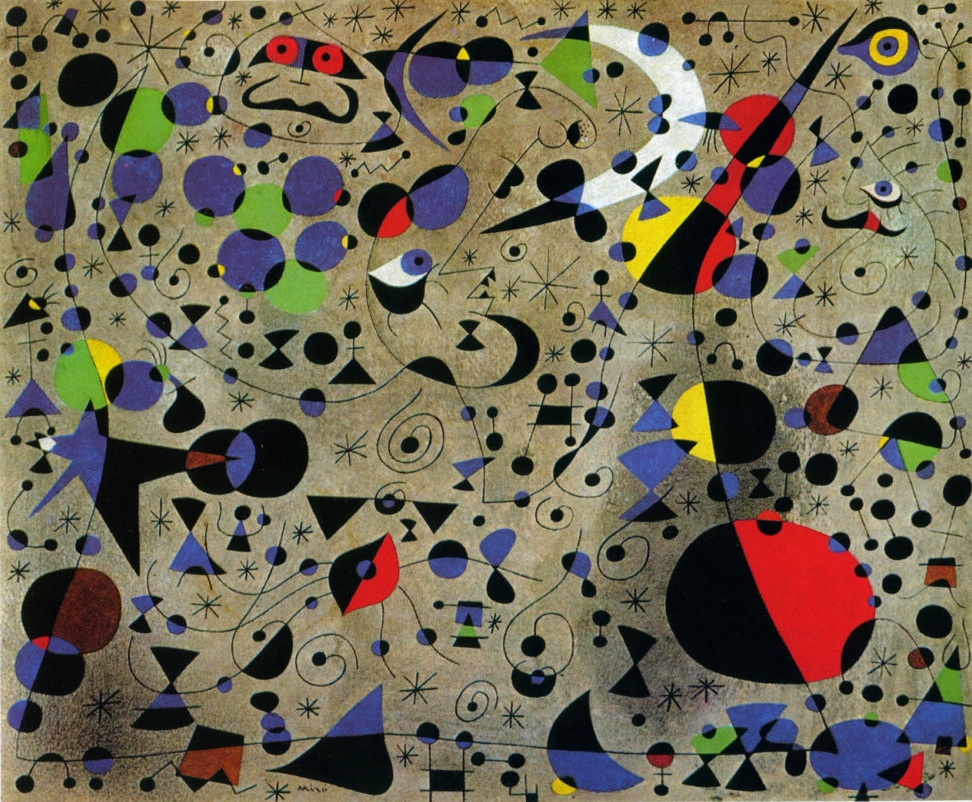

In May 1937, the Zwemmer Gallery hosted the exhibition “Selected early paintings and drawings by Joan Miró”, showing works such as The Tilled Field 1923-24 and Maternity 1924, as well as five paintings from the Cooper collection. As well as Dalí’s infamous lecture given in a deep-sea diving suit As art historian Michel Remy has stated, Surrealism was also put to the test “when a herring was pinned to one of Miró’s objects, apparently by the composer William Walton, and had to be taken away by Nash on account of the smell”. Miró exhibited several assemblages and paintings, including his two masterworks Harlequin’s Carnival 1924-25 and Dutch Interior I 1928. The show was organised by Penrose, Read, Moore and poet David Gascoyne, attracted over 23.000 visitors in its three week run and marked the “official” introduction of Surrealism in Britain. Miró first travelled to London in June 1936 to attend the opening of the “International Surrealist Exhibition” held at the New Burlington Galleries, along with fellow members of the Surrealist movement – André Breton, E.

A picture of the installation showing the 1933 Peinture by Miró was later reproduced in the magazine Circle, edited by Nicholson, Gabo and architect Leslie Martin in 1937. In spring 1936 three of his works were included in the “Abstract and Concrete” touring exhibition curated by Nicolette Gray, which showed works by British abstract artists, such as Henry Moore and Ben Nicholson, in the wide context of the European avant-garde movements, represented in the show by Naum Gabo and Piet Mondrian. In October that year, when the gallery organised a group exhibition in connection with Herbert Read’s book Art Now, Miró showed his 1929 Portrait of a Lady in 1820, a transfigured version of a John Constable painting. By that time Miró had already showed his works in Paris and New York, and his famous sentence “Je veux assassiner la peinture” (I want to assassinate painting) had made him l’enfant terrible of Surrealist art. The Mayor Gallery was a pioneer in exhibiting international avant-garde artists like Alexander Calder, Paul Klee and André Masson. Miró’s first solo exhibition in London was co-organised by Cooper and enterprising gallerist Fred Mayor in July 1933. Tracking Miró’s complex biography reveals that his connection to London was equally productive: his paintings were exhibited and sold here as early as 1933, and from 1936 he was establishing contacts with relevant figures of British art – including the Surrealist artist Roland Penrose, and art historian Douglas Cooper. Joan Miró’s first visits to Paris in the early 1920s affected his work so much that today art historians often overlook the influence of his other journeys to European capitals, such as Amsterdam in 1928 or Prague in 1932.


 0 kommentar(er)
0 kommentar(er)
